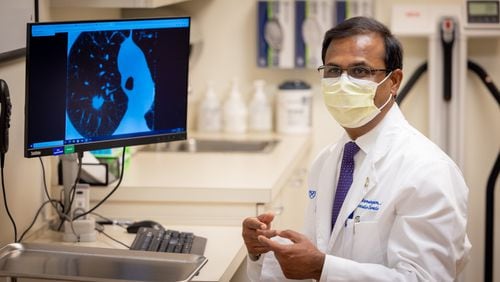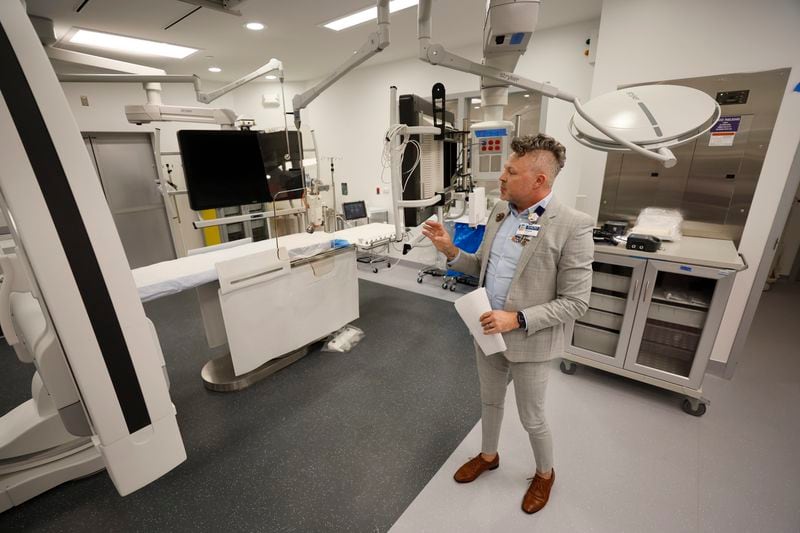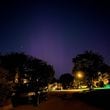The American Cancer Society released new lung cancer screening guidelines Wednesday expanding the number of people who are advised to get yearly CT scans, which will now include people who quit smoking decades ago – a move aimed at spotting lung cancer early when it is most treatable.
Lung cancer is the leading cause of cancer deaths in the U.S. and one reason is because many patients don’t experience symptoms or get diagnosed until the disease becomes advanced.
“This is an incredible loss of life in this country,” said Dr. William Dahut, chief scientific officer for the American Cancer Society about lung cancer. “There are so many new treatments out for lung cancer, so many new targeted therapies that the chance of survival is so much better if one is diagnosed earlier on.”
Previously, guidelines recommended screening for current and former smokers who had quit within the past 15 years. But now, the society recommends screening for people who quit more than 15 years ago.
Credit: Miguel Martinez
Credit: Miguel Martinez
The revised recommendations include people between the ages of 50 to 80 and who either currently smoke or have smoked at least a pack a day for 20 years or more. The new screening guidelines reduce the smoking history to 20 years, from 30. They also lower the age when the screening should start to 50 from 55.
The lowering of packs per day and the earlier starting age for screening puts the ACS guidelines in line with existing recommendations from the U.S. Preventive Services Task Force. The ACS says their updated guidelines translate into 5 million more people, to a total of 19 million Americans, being eligible for the screening.
The recommended annual screening test for lung cancer is a low-dose computed tomography scan, also called a low-dose CT scan, which is a special kind of X-ray that takes multiple pictures while a person lies on a table that slides in and out of a machine. Only about 6% of people eligible for screening currently get it, according to Mount Sinai researchers.
Lung cancer had been difficult to treat and, 15 years ago, few options were available besides radiation and chemotherapy, with modest effectiveness. But promising advances including new therapies and more precise and less invasive surgical techniques are helping dramatically improve the outlook for people diagnosed with lung cancer.
The average five-year survival rate for all lung cancer patients is 18.6 percent because only 16 percent of lung cancers are diagnosed at an early stage, according to Mount Sinai researchers.
But if lung cancer is caught before it spreads, the likelihood of surviving vastly improves. For patients who have small, early-stage lung cancer, the cure rate can be as high as 80% to 90%, according to the American Society of Clinical Oncology.
Credit: TNS
Credit: TNS
Dr. Robert Smith, senior vice president, early cancer detection science at the American Cancer Society and lead author of the lung cancer screening guideline report said the assumption in the scientific community had been that after 15 years, the risk of lung cancer had reached such a low level it was “no longer productive to continue screening.” But as ACS looked for evidence to continue supporting this position, Smith said, they were not finding supporting evidence of the risk level after 15 years falling to the same level as someone who had never smoked. In fact, a review of epidemiological data found the risk of lung cancer over time wasn’t dropping for those who quit more than 15 years ago and was “actually increasing” as the person aged.
Dr. Suresh Ramalingam, executive director of Winship Cancer Institute of Emory University, said he “strongly supports” the revised guidelines.
“Lung cancer screening saves lives,” Ramalingam said in an e-mail. “The treatment options for lung cancer have dramatically improved in recent years. If detected early, there is a much higher likelihood of achieving a cure for lung cancer. While lung cancer detected at advanced stages can be treated effectively, cure is unlikely.”
In 2023, ACS researchers estimate 238,340 new cases of lung cancer will be diagnosed in the U.S. with about 127,070 deaths from the disease. In Georgia this year, it is estimated 7,610 people will be diagnosed with lung cancer and 4,060 people in the state will die from the disease.
Most insurance plans and Medicare help pay for recommended lung cancer screening tests. But they may not cover them for people who were not already eligible before these updated guidelines were released.
Even so, Ramalingam believes the new ACS guidelines will be “highly influential” in shaping the screening landscape for lung cancer and raising awareness about the need for screening for those who stopped smoking more than 15 years ago.
ACS’s guidelines may also lead to changes by U.S. Preventive Services Task Force that could require insurance coverage of these screenings.
Who should get lung cancer screening
— People who are between the ages of 50 to 80 years old and either currently smoke or formerly smoked at least a 20-pack year smoking history. (The pack-year smoking history is the number of packs of cigarettes per day multiplied by the number of years smoked. For example, someone who smoked one pack a day for 20 years or someone who smoked two packs a day for 10 years)
— To get the most benefit from screening, people need to be in fairly good health. That means they need to be able to handle surgery and other treatments to try to cure lung cancer if it is found.
— Screening is meant to find cancer in people who do not have symptoms of the disease.
— People with possible symptoms of lung cancer such as coughing up blood should see a doctor immediately for tests regardless of their smoking history.
SOURCE: American Cancer Society









